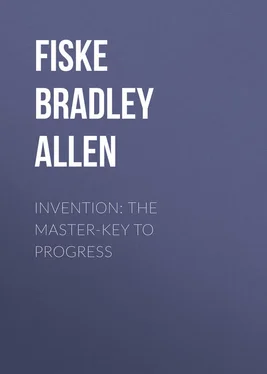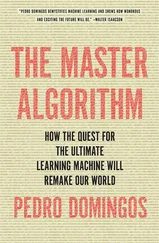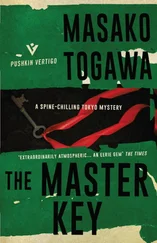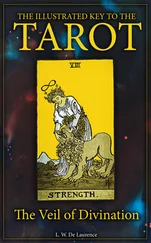Bradley Fiske - Invention - The Master-key to Progress
Здесь есть возможность читать онлайн «Bradley Fiske - Invention - The Master-key to Progress» — ознакомительный отрывок электронной книги совершенно бесплатно, а после прочтения отрывка купить полную версию. В некоторых случаях можно слушать аудио, скачать через торрент в формате fb2 и присутствует краткое содержание. Жанр: foreign_antique, foreign_prose, на английском языке. Описание произведения, (предисловие) а так же отзывы посетителей доступны на портале библиотеки ЛибКат.
- Название:Invention: The Master-key to Progress
- Автор:
- Жанр:
- Год:неизвестен
- ISBN:нет данных
- Рейтинг книги:4 / 5. Голосов: 1
-
Избранное:Добавить в избранное
- Отзывы:
-
Ваша оценка:
- 80
- 1
- 2
- 3
- 4
- 5
Invention: The Master-key to Progress: краткое содержание, описание и аннотация
Предлагаем к чтению аннотацию, описание, краткое содержание или предисловие (зависит от того, что написал сам автор книги «Invention: The Master-key to Progress»). Если вы не нашли необходимую информацию о книге — напишите в комментариях, мы постараемся отыскать её.
Invention: The Master-key to Progress — читать онлайн ознакомительный отрывок
Ниже представлен текст книги, разбитый по страницам. Система сохранения места последней прочитанной страницы, позволяет с удобством читать онлайн бесплатно книгу «Invention: The Master-key to Progress», без необходимости каждый раз заново искать на чём Вы остановились. Поставьте закладку, и сможете в любой момент перейти на страницу, на которой закончили чтение.
Интервал:
Закладка:
The likeness between this process and that of conception, gestation and birth is obvious.
The Assyrians were evidently a very practical and constructive people, somewhat such people as the Romans later were. They devoted themselves to the practical side of life, and to this end they developed the governmental and the military arts. They were great warriors. The period of their greatest greatness was in the seventh and eighth centuries B. C., when the conquerors Sargon II and Sennacherib were kings. The splendor of the empire afterwards was conspicuous but not long lived; for after unifying the great nations of the Orient under Assyrian rule, and carrying on wars marked with the utmost of cruelty and oppression, they finally entered on a rapid decline in morals, and consequently in national prosperity and strength. The end came in 606 B. C., when a combined force of Medes and Babylonians captured and sacked the hated Nineveh, the capital. The intensity of the hatred against the Assyrians may be gauged by the completion of the destruction visited on Nineveh. When Xenophon saw its ruins only two centuries afterwards, he could not even ascertain what city those ruins marked.
The Assyrians have left us clearer records of their achievements in the invention of weapons than has any other ancient nation. It is impossible to declare with certainty that all the seemingly novel weapons and armor which the ancient Assyrians possessed and used were invented by themselves, and not by the Egyptians or the Babylonians; but the mere facts that the Assyrians were the most military nation of the three, and that the specimens of those weapons which have come down to us have been mostly Assyrian, give probability to that supposition.
The Assyrian soldier was finely equipped and armed as far back as the thirteenth century B. C.; and Assyrian bas-reliefs show that they actually used war-chariots then, drawn by horses and operated by armed warriors. The infantry soldiers wore defensive armor consisting of helmets, corslets made of skin or some woven stuff on which plates of metal were sewn, and sometimes coats of steel mail; with leggings to protect the legs. They carried shields, and were armed with lances, swords, slings and bows and arrows. The Assyrians employed cavalry, the horsemen wearing mail armor, and carrying shields and swords and lances. They employed archers also; the archers being sometimes mounted.
The use of war-chariots, with all the mechanical equipment that was necessary, in order to make them operate effectively, shows a state of civilization much higher than many people realize. It shows also that a great deal of inventiveness and constructiveness must have been employed, and must have been skilfully directed; – for it is a very long road – a very long road indeed – from the bow and arrow to the war-chariot. In order to produce the war-chariot, several inventions must have previously been made. The most important of these was one of the most important inventions ever made, – the wheel.
Who invented the wheel, and when and where did he invent it?
This is one of the unanswered questions of history. The war-chariot suddenly appears on the stage, without any preliminary announcement, and without any knowledge on our part that even the wheel on which it moved had been invented.
It is true that the records of prehistoric man show us that in fashioning pottery he used a disc that he revolved on a spindle and applied to the surface of the urn or vase; and it is also true that a revolving disc is a kind of wheel. But a disc revolving on a stationary spindle is in its intent and use a very different implement from a wheel placed on a chariot, and turned by the forward movement of the chariot itself, for the important purpose of reducing its resistance to being drawn along the ground.
It is true also that invention was needed to produce the revolving disc, the forerunner of all the polishing and turning machines on the earth today. But the wheel was a different invention, probably a later one, and certainly a more important one. There are things sometimes seen in nature that look a little like revolving discs; for instance, swirls of dust or water. In fact, almost anything put in rotation looks like one, if the rotation is rapid enough; for instance, the sling that a primeval slinger revolved around his head. But what do we know of in nature that looks like a wheel, or that is used for a similar purpose? Nothing. This being the case, the mind may lose itself in speculation as to what could have led to the conception of such an appliance in the mind of the original inventor of the wheel.
The suggestion may be hazarded that the invention was preceded by an accidental recognition of the fact that it was easier to drag something along the ground, if it rested on round logs, than if it did not so rest; and by noting also that the logs were passed over and left behind continually. From this point to the mental conception of a roller that would not be left behind, but would be secured to the thing dragged by a round shaft on which it revolved, there was probably a single mental jump. Someone saw such a contrivance with his mental eye. It looked dim and unreal – but he saw it. To make the picture clear, and then to develop the thing pictured, constructiveness was used. In other words, conception and development accomplished their successive but cooperating tasks. The invention was complete when a wheel was actually produced.
To realize the importance of the wheel, we have but to ask ourselves (or our neighbors) how history could possibly have been even approximately what it has been if the wheel had not been invented.
Another important invention probably made by the Assyrians was the catapult; another one, somewhat similar, was the balista. The catapult was used for hurling stones, balls, etc.; the balista for shooting arrows with greater force than an archer could exert. Another was the battering ram for making breaches in the walls of fortresses.
The Assyrians used these inventions in their wars against the contiguous nations of the East, and with their aid achieved the mastery, and unified the Orient. That the Assyrian rule was harsh and cruel should not be denied; but, on the principle that any kind of government is better than no government, it cannot reasonably be supposed that the central and efficient administration of Assyria was not better than the condition of continual petty wars and quarrels that had existed among the numerous tribes and nations, with their enormous possibilities for suffering of all kinds.
It may be pointed out here that the cruelties and injustices committed by any powerful government against great numbers of persons attract immeasurably more notice and condemnation by historians and others than do the numberless atrocities of all kinds that lie hidden in the darkness of anarchy, or the confusion of petty wars. In the endeavor to preserve order over widely separated and barbarous peoples, when means of transportation and communication were inadequate, stern measures seem always to have been required. That they have often been too stern, and that great cruelty has often been exercised, the wail of the ages testifies. But human nature is very imperfect; and no really good government, no government free from the faults of man, has ever been established. Yet every government has been better than anarchy.
The Assyrians, despite their cruel treatment of their conquered peoples, did a direct service to mankind and gave a powerful stimulus to the march of progress. For the great empire which they established, and the great cities which grew up, and the system of provinces which they instituted, formed a pattern for similar work by later nations; while the civilization which they spread throughout the more backward countries under their rule, especially in Greece, started the later culture which Greece developed, and which is the basis of all that is most beautiful in the civilization of today.
Читать дальшеИнтервал:
Закладка:
Похожие книги на «Invention: The Master-key to Progress»
Представляем Вашему вниманию похожие книги на «Invention: The Master-key to Progress» списком для выбора. Мы отобрали схожую по названию и смыслу литературу в надежде предоставить читателям больше вариантов отыскать новые, интересные, ещё непрочитанные произведения.
Обсуждение, отзывы о книге «Invention: The Master-key to Progress» и просто собственные мнения читателей. Оставьте ваши комментарии, напишите, что Вы думаете о произведении, его смысле или главных героях. Укажите что конкретно понравилось, а что нет, и почему Вы так считаете.












